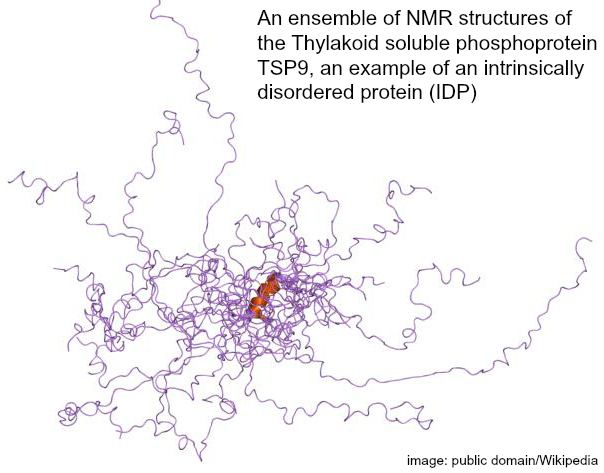 Evolution
Evolution
Biology’s Quiet Revolution

In 1980, I overheard a prominent Ivy League cell biologist say that all the basic features of living cells had been discovered; we just needed to fill in the details. His remark reminded me of a statement attributed to William Thompson (Lord Kelvin) in 1900: “There is nothing new to be discovered in physics now. All that remains is more and more precise measurement.” Of course, many revolutionary discoveries in physics were made after 1900. Similarly, many revolutionary discoveries in cell biology have been made since 1980.
Features of living cells that were known by 1980 included the nucleus, the plasma membrane that encloses the cell, the nucleolus (a rounded structure inside the nucleus), chromosomes, mitochondria (tiny energy factories inside the cell), vesicles (tiny membrane-bound compartments in the cell), and the Golgi apparatus and endoplasmic reticulum (a network of membranes inside the cell). Scientists had also discovered that DNA carries information encoded in sequences of its four subunits; that the coded information is transcribed into messenger RNAs; and that messenger RNAs are translated into proteins by complex molecular machines in the cell called “ribosomes.” Indeed, it became widely accepted that DNA thereby determines the main features of cells — and the multicellular organisms that are composed of them. Put simply, “DNA makes RNA makes protein makes us.”
This view fit neatly with the modern version of Darwin’s theory of evolution, according to which DNA mutations provide the raw materials for evolution by natural selection. “With that,” said molecular biologist Jacques Monod in 1970, “the mechanism of Darwinism is at last securely founded, and man has to realize that he is a mere accident.”
But there have been many discoveries in cell biology since 1980, including some that undermine the idea that “DNA makes RNA makes protein makes us.”
Before 1980, biologists already knew that protein-coding regions of DNA in plants and animals are separated by non-protein-coding regions, and that the former could be spliced together in various ways before translation. But it wasn’t until 1985 that biologists discovered the “spliceosome,” a molecular machine that engaged in RNA splicing that rivals the ribosome in its complexity. Biologists subsequently learned that a single protein-coding region in DNA can yield thousands of different proteins through alternative splicing.
In 1986, biologists discovered RNA editing, by which a cell modifies the subunits in a messenger RNA before translating it into protein–so the final product is not what would have been predicted from the original DNA sequence. At first, this process was found only in single-celled organisms, but extensive RNA editing has since been discovered in humans. In 2003, biologists discovered the “editosome,” which performs RNA editing and (like the spliceosome) rivals the ribosome in its complexity.
So several important structures in cells have been discovered since 1980. Significantly, these discoveries cast doubt on the old adage that “DNA makes RNA makes protein make us.” If “makes” is taken to mean “determines,” then in many cases it is not true that DNA makes RNA.
In many cases it is also not true that RNA makes protein. A protein consists of a string of amino acids that folds into a three-dimensional shape. A protein’s function depends on its shape, but in many cases the same amino acid sequence can fold into different shapes.
In 1982, biochemist Stanley Prusiner discovered “prions,” proteins that normally fold one way but can fold differently and thereby cause disease. There are also healthy proteins in which the same amino acid sequence can fold into more than one shape; these are known as “metamorphic” proteins. The first was discovered in 1992, but more have been identified since then.
In 1996, biologists discovered a protein that does not fold into a unique shape but can assume different shapes when it interacts with other molecules. Since then, many such proteins have been found; they are called “intrinsically disordered proteins,” or IDPs. IDPs are surprisingly common, and their disordered regions play important functional roles.
Recently, biologists Jeffrey Toretsky and Peter Wright published a scientific review article about transient functional compartments inside cells (but not enclosed in membranes) that they call “assemblages,” many of which are composed of IDPs. According to a news report in ScienceDaily, the authors are “issuing a call to investigators from various backgrounds, from biophysics to cell biology, to focus their attention on the role of these formations.”
I second that. Although Toretsky and Wright do not get into larger issues in their article, their work is part of a quiet but far-reaching revolution in biology–one that is discrediting the notion that “DNA makes RNA makes protein make us,” and along with it the “securely founded” Darwinism of Jacques Monod. If something other than DNA determines an organism’s RNAs and proteins, then that “something”–not DNA mutations–is the source of raw materials for evolution. Indeed, the evidence from embryology is consistent with this: No matter how much we mutate the DNA of a fruit fly embryo, the only possible outcomes are a normal fruit fly, a defective fruit fly, or a dead fruit fly. Natural selection cannot produce anything from these raw materials except a fruit fly. Not a housefly, a dragonfly, or a butterfly.
So it is not true that biologists know all the basic features of living cells and are merely filling in the details. Nor is it true that Darwinian evolution is a settled scientific “fact,” as its defenders claim. Huge unanswered questions remain, and they will only be answered by going beyond the discredited myth that “DNA makes RNA makes protein makes us.”
